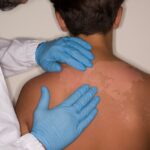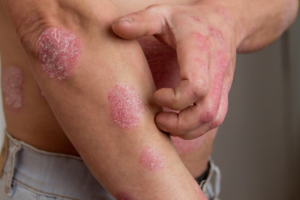
Jimmy Buffett, the world’s premier sun-loving beach enthusiast, recently passed away from a rare form of cancer known as Merkel cell carcinoma. About 3,000 cases are diagnosed every year in the U.S. and are resistant to treatment. It typically metastasizes, or spreads, about two to three years after diagnosis. Buffett fought with the cancer for four years before his death before he passed away on September 1, 2023.
Skin cancer’s primary cause is overexposure to the sun and a lack of skin protection, something that’s usually associated with tropical and sunny regions. But it can happen anywhere in the world, including Pennsylvania. Seeing a dermatologist for skin cancer in Southampton, PA, helps you stay on top of your skin’s health. In the meantime, here’s a look at Merkel cell carcinoma and what you need to know about it.
Merkel Cell Carcinoma: What Sets it Apart From Other Skin Cancers
Merkel cell carcinoma occurs in one out of every 130,000 cases in the U.S. Someone who receives a diagnosis of skin cancer is more likely to have melanoma than Merkel cell. What makes Merkel cell carcinoma so dangerous is the fact it’s very aggressive and the odds of it returning after removal are high. It’s also more likely to return within two to three years after diagnosis.
The disease is named after Friedrich Merkel, a German scientist who discovered the malignant cells in 1875. The science on Merkel cell carcinoma is still theoretical as it’s thought to be a type of neuroendocrine cell that’s found in the epidermis layer of the skin. The cancer is thought to become active when the skin is exposed to the sun, a weakened immune system allows the cells to grow out of control, and Merkel cell polyomavirus (MCV).
What Merkel Cell Carcinoma Looks Like
Merkel cell carcinoma most commonly looks like a pimple or cyst that’s red, purplish, or blue-red but is not tender to the touch. A scab can form on the bump, but not always. In contrast, melanoma and other skin cancers tend to show up as flat or slightly raised dark spots with rough edges.
A Merkel cell carcinoma lump tends to show up in areas that undergo the most sun exposure, such as the face and arms, but it can also be found on the legs, inside the nose, and in the esophagus.
The General Outlook and Risk Factors
Early detection and treatment are vital to surviving a case of Merkel cell carcinoma. The odds of living five years or more after diagnosis stand at about 75%, but if it’s metastasized, or spread beyond the skin, the survival rate past five years drops to 24%.
One of the issues that complicates the treatment of the carcinoma is the fact that it’s very rare and few studies have been done on ways to fight it. What is known is that the risk factors include the fact that men are more likely than women to develop cancer, 90% of all patients are White, and 80% are 70 years or older. The disease is generally seen in people who are 50 years or older with the risk factor of developing the disease increasing with age. To date, there is no way to prevent getting MCV, the virus that causes the disease.
Contact Us at Pennsylvania Dermatology Specialists Today for an Appointment
Skin cancer is highly treatable provided you catch it early and take action by seeing a dermatologist when you see something unusual on your skin. You can also stay ahead of the development of skin cancer with regular exams with our dermatologist and give your skin the protection it deserves. Call us today at our clinic in Southampton, PA, and take charge of your skin’s health.








No comment yet, add your voice below!